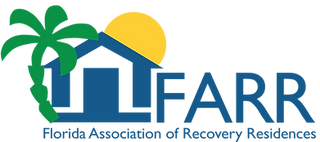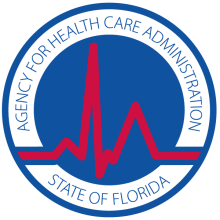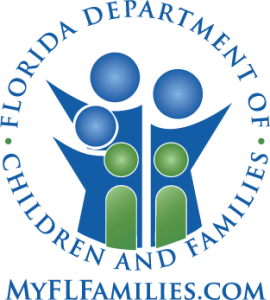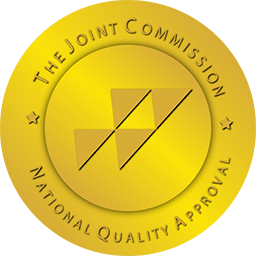Aggressive marketing from drug dealers has made purer forms of heroin readily available in an attempt to hook new customers. Rising purity levels are especially dangerous because they can cause unexpected overdoses and the rapid onset of addiction.
Many young people are introduced to heroin by their peers – usually acquaintances, friends, and siblings. People often try drugs like heroin because of peer pressure. They may think it’s cool because heroin has been glamorized in the entertainment and fashion industries. They may not be aware of the dangers of using heroin, especially the threat of addiction and overdose.
Cocaine or crack addicts may use heroin to combat the negative effects of their crack or cocaine use.

Heroin Addiction is Rapid and Severe
Heroin addicts will crave more of the drug and experience severe withdrawal symptoms if they do not get their regular fix. Heroin abusers may lose interest in daily activities and experience loss of energy and boredom.
They may have a hard time limiting their use, build a tolerance to the drug requiring larger amounts of the drug to get the same effect and develop problems with their jobs and personal relationships.
Heroin can become the most important aspect of their lives. Heroin addicts often have habits that cost $100-$200 a day, which can cause addicts to quickly turn to lives of shoplifting, burglary, theft, drug dealing, and prostitution to support their habits.
Short-Term Effects of Heroin
Heroin users may begin to feel a rush within 7 – 8 seconds if they inject the heroin intravenously, and within 10 – 15 minutes if snorted or smoked. They start to feel tired, or as though the world no longer exists around them. The heroin user’s ability to function both mentally and physically decreases.
Short-term or immediate effects of heroin use include:
A warm flushing of the skin Dizziness Feeling of euphoria Dry mouth Watery eyes and runny nose Constricted pupils Heavy feeling in the extremities Nausea Vomiting Severe itching
Euphoric feelings are followed by drowsiness, clouded mental function or stupor, decreased respiration and heartbeat, and feelings of well-being that may last 4 – 6 hours.
Heroin effects damage the nervous system and can also cause short- and long-term harm to the respiratory and cardiovascular systems.
Heroin Overdose can be Fatal
Rising levels of drug purity combined with by-products and impurities inadvertently created during manufacturing can lead to adverse reactions and overdoses in new and chronic users alike.
Combinations of heroin and other central nervous system depressants like alcohol can intensify the effects by slowing the heart and breathing so much that they stop.
Overdose victims may lose consciousness and exhibit pinpoint pupils, depressed breathing, and clammy skin. They may enter a coma or suffer severe, permanent damage if they survive.
If an overdose victim is promptly given medical care, emergency medical physicians can administer Narcan (naloxone) to reverse heroin’s depressant effects and/or give mechanical assistance to maintain heartbeat and breathing.
Long-Term Effects of Heroin Addiction
This makes heroin very dangerous, as a heroin user requires more and more heroin to get high, leading to physical dependence and heroin addiction. It may only take a few uses to become addicted to heroin as more low-priced, high-quality street heroin becomes available.
Then, getting more heroin becomes a full-time obsession. Resulting behavior can start a downward spiral in friendships, family, career, and finances, possibly leading to legal troubles. (Heroin is currently classified as a Schedule 1 substance with significant penalties for possession, distribution, and use.)
Long-term physical effects of heroin include:
Severe addiction and withdrawal Collapsed and scarred veins Bacterial infections Infection of the heart lining and valves Abscesses or boils Arthritis or other rheumatologic problems Liver and kidney diseases Increased risk of pneumonia, tuberculosis, and other infectious diseases
Heroin addiction places users who inject the drug particular risk of infection with HIV, the virus that causes AIDS, and hepatitis, a liver disease. Both diseases can be spread by sharing needles, using unsterilized drug paraphernalia, and participating in risky sexual behavior.
Pregnant heroin users risk miscarriages, premature births, and stillbirths. Infants who do survive are born addicted to heroin and exhibit severe withdrawal symptoms. Heroin use can disrupt a woman’s menstrual cycle so much that she may not even be able to recognize a pregnancy.
Heroin Withdrawal Symptoms
Heroin withdrawal symptoms include:
Appetite loss Insomnia Severe muscle and bone pain Sweats Chills Panic Tremors Nausea Vomiting Diarrhea Cramping Panic Depression Uncontrollable body movements Elevated blood pressure, pulse, respiration, and temperature
Dope sickness, or withdrawal from heroin, can be a daily battle for long-term heroin users. Withdrawal can prove fatal sometimes, and hospitalization is necessary for strong symptoms of withdrawal.
What Does Heroin Look like and How is it Made?
Heroin is often combined or “cut” with sugar, starch, powdered milk, quinine, and, less often, with strychnine, reducing purity and increasing quantity for greater sales volume.
In Texas, the most common forms are Black Tar and Mexican Brown heroin. Because of slightly different manufacturing processes, Black Tar heroin ranges from a sticky, brown tar-like material to a substance resembling black coal. Mexican Brown heroin consists of a pinkish-brown powder with brown flecks and/or white particles. Mexican Brown is often a combination of Black Tar heroin that has been combined or cut with another substance.
Heroin can be Smoked, Snorted, or Injected
There is a rising segment of young users who sniff, snort, and smoke heroin to avoid the dangers of using needles. Although the risks of contracting incurable, fatal diseases like HIV / AIDS and hepatitis from sharing needles, heroin’s addictive quality poses an extremely potent danger.
The drug is often used in combination with other illicit drugs, especially cocaine/crack, benzodiazepines (Valium), and alcohol. Some users snort alternate lines of heroin and cocaine, known as “crisscrossing,” or inject the two drugs as a “speedball.” There are also reports of users sniffing liquefied heroin intranasally by using a nasal spray bottle, a practice known as “shabanging.”
Young people may even be under the impression that smoking and/or snorting heroin is a safe method. But, unfortunately, any method of heroin use can result in heroin overdoses and addiction.
Drug Paraphernalia for Injecting Heroin
An “outfit” or “rig” refers to a heroin user’s injecting supplies. Supplies vary but usually consist of:
Spoon or bottle cap to cook the heroin Syringe or needle to inject the mixture Tourniquet or towel to identify a vein for injecting Cotton Matches to heat and dissolve the heroin in water
Sharing rigs is a common method for transmitting the HIV virus that causes AIDS. In New York City, some 46 percent of AIDS cases are due to sharing needles. In Texas in 1997, 23 percent of AIDS cases were transmitted due to needle sharing.
Slang Terms for Heroin
Other names may refer to types of heroin produced in a specific geographical area, such as Mexican Black Tar, Mexican brown, or China White.
Smoking heroin is known as “chasing the dragon.”
Heroin Addiction Treatment
Synthetic, long-acting narcotics like methadone, an endorphin replacement medication, may be necessary for long-term heroin addiction treatment. Methadone simultaneously blocks the rush and eliminates withdrawal symptoms of heroin addiction. Research has found methadone to be a long-term, safe aid in heroin addiction recovery.
Transitions Recovery drug treatment center offers hope for those suffering from the obsessive clutches of heroin.
Our professional drug treatment center staff is experienced in helping youth and people of all ages recover from drug and alcohol abuse. We provide a compassionate, supportive environment in our North Miami Beach, Florida, drug treatment center.
Admissions can be accepted 7 days a week. Trained addiction professionals conduct individual assessments that address each individual’s treatment needs. You’ll find our heroin addiction treatment programs offer access to a continuum of care that provides the intensity of therapy appropriate throughout each stage of heroin addiction recovery, from extended residential care to lifetime aftercare services. The individual program incorporates leading forms of therapy that have proven effective in addressing underlying causes of heroin drug use, dual diagnosis, and issues with family, employers, school and the legal system.
We work individually with patients suffering from heroin addiction, as well as in group sessions and a Family Program, after heroin detox.
Emphasis on recovery from heroin addiction and maintained sobriety helps prepare the patient for gradual re-entry into society.
Heroin treatment does not need to be voluntary. Often, a family member, employer, or the court system can be the motivating factor for an individual receiving drug treatment for heroin addiction.







